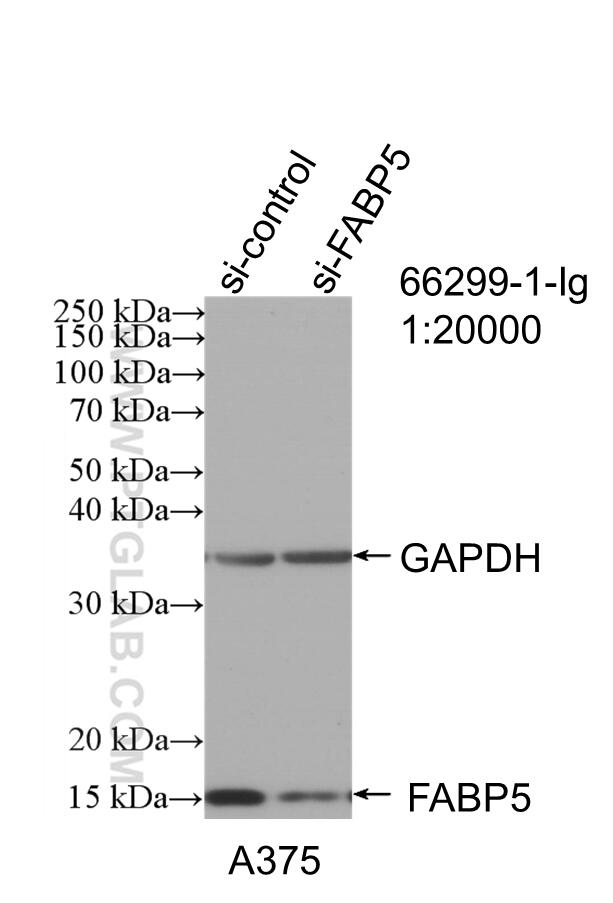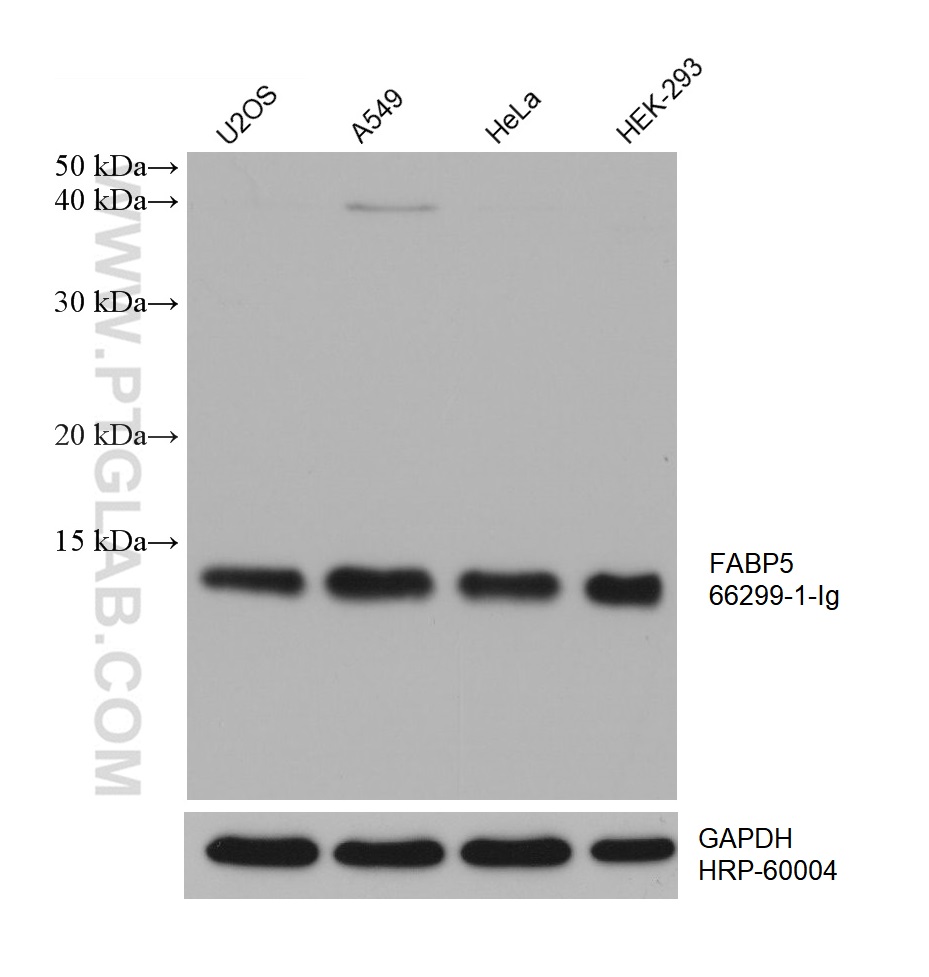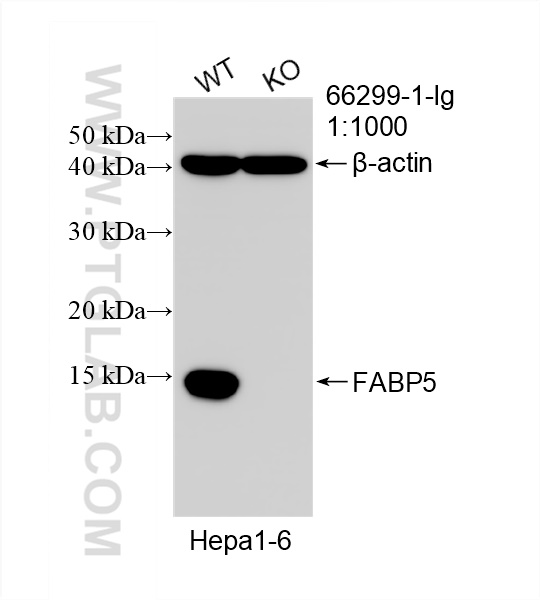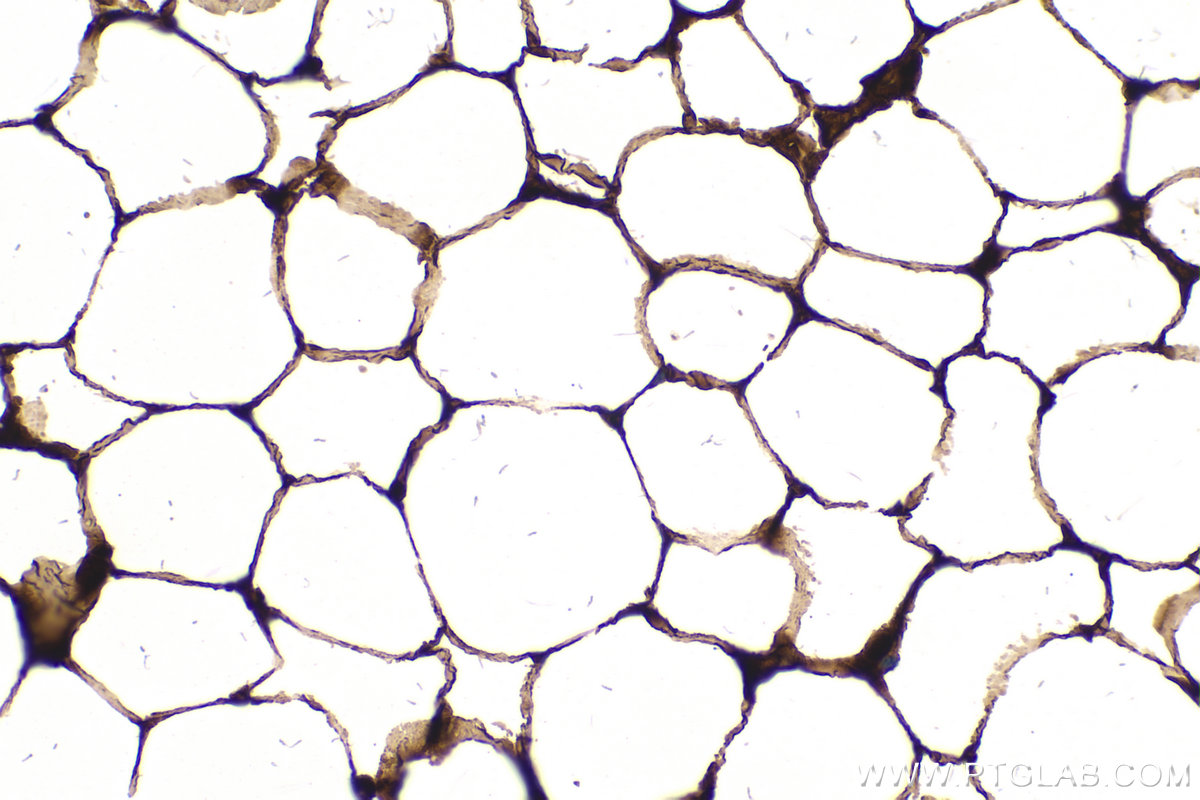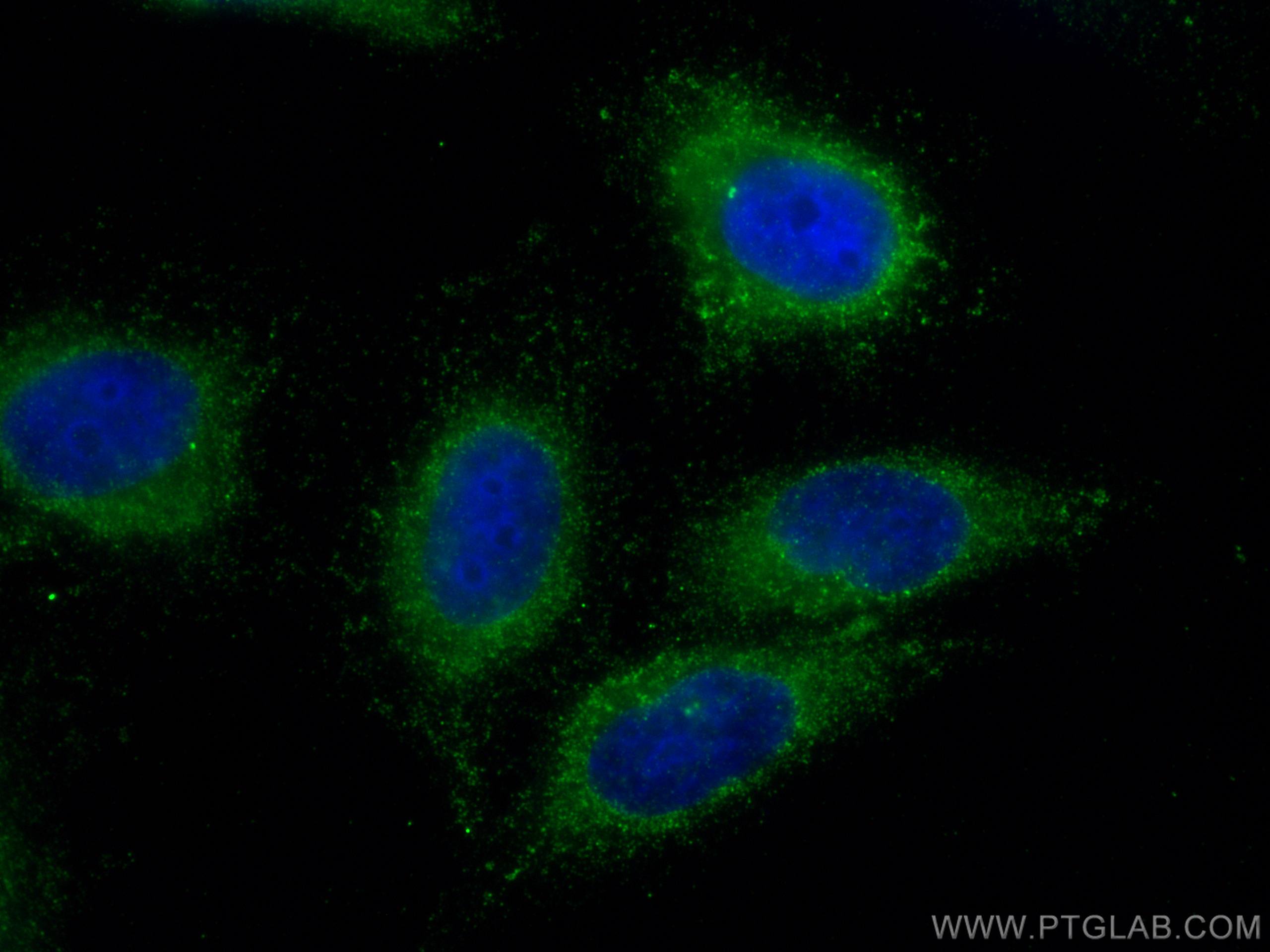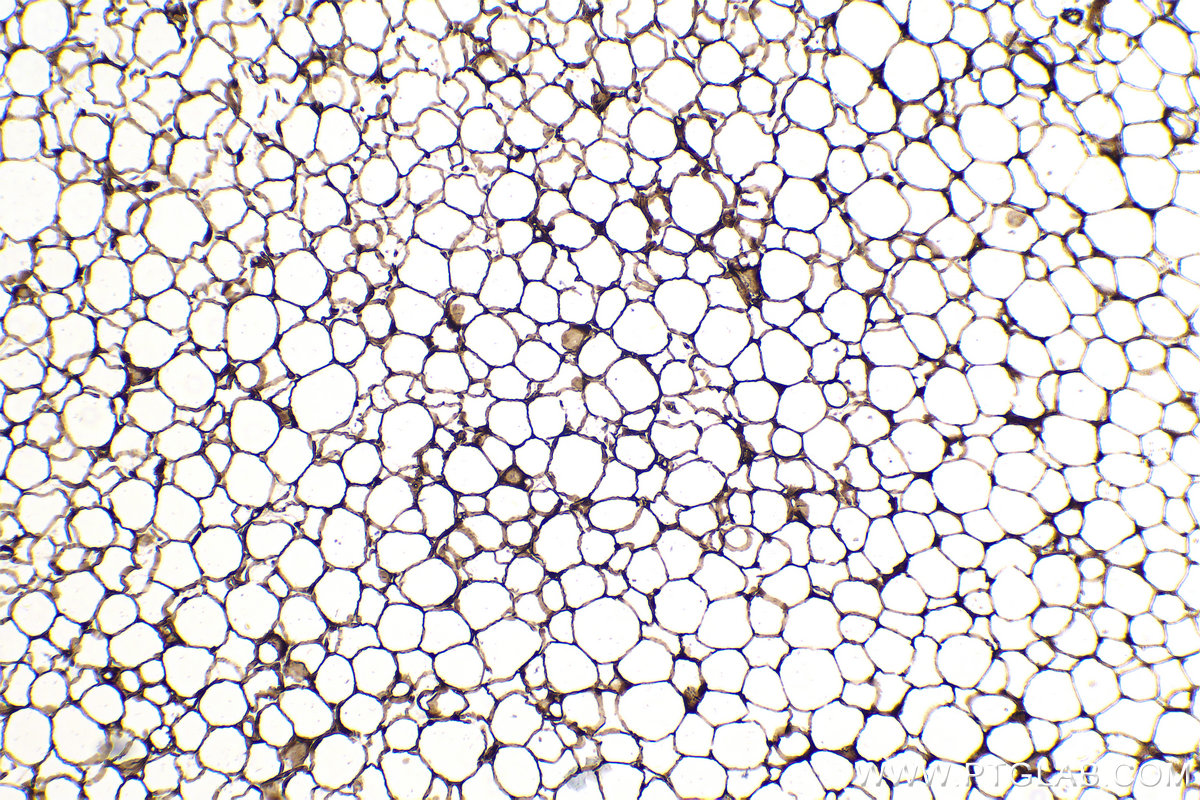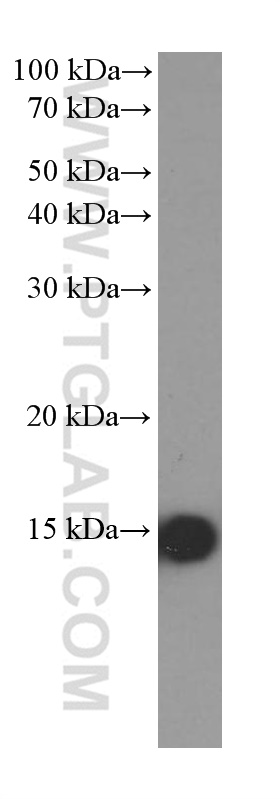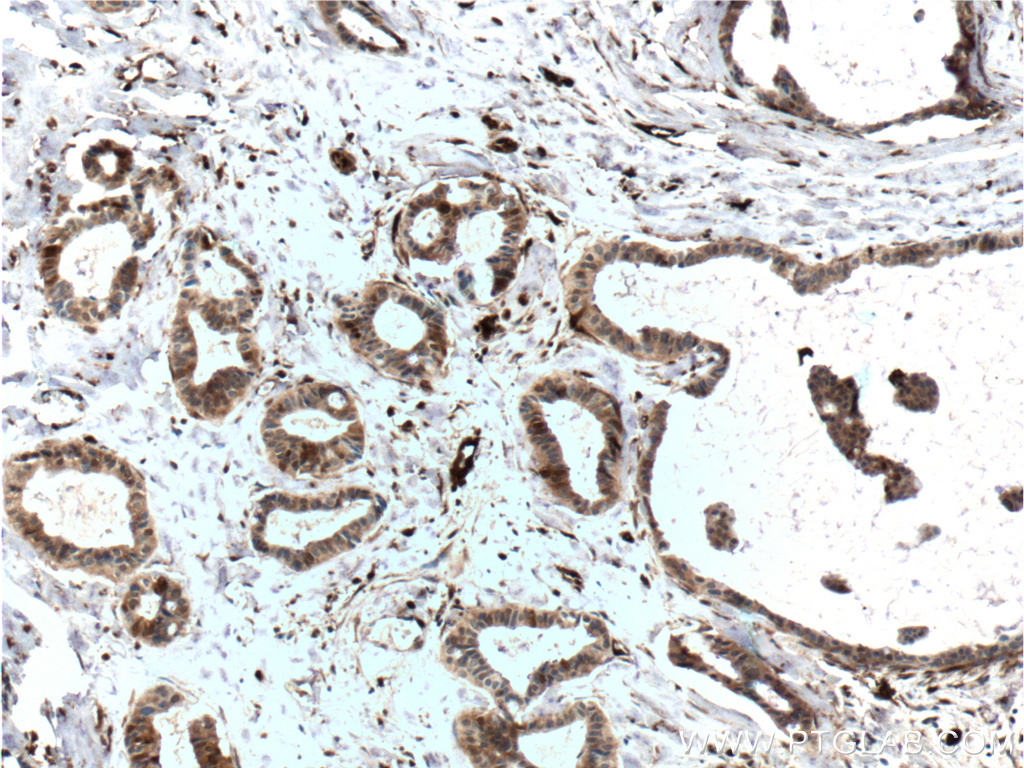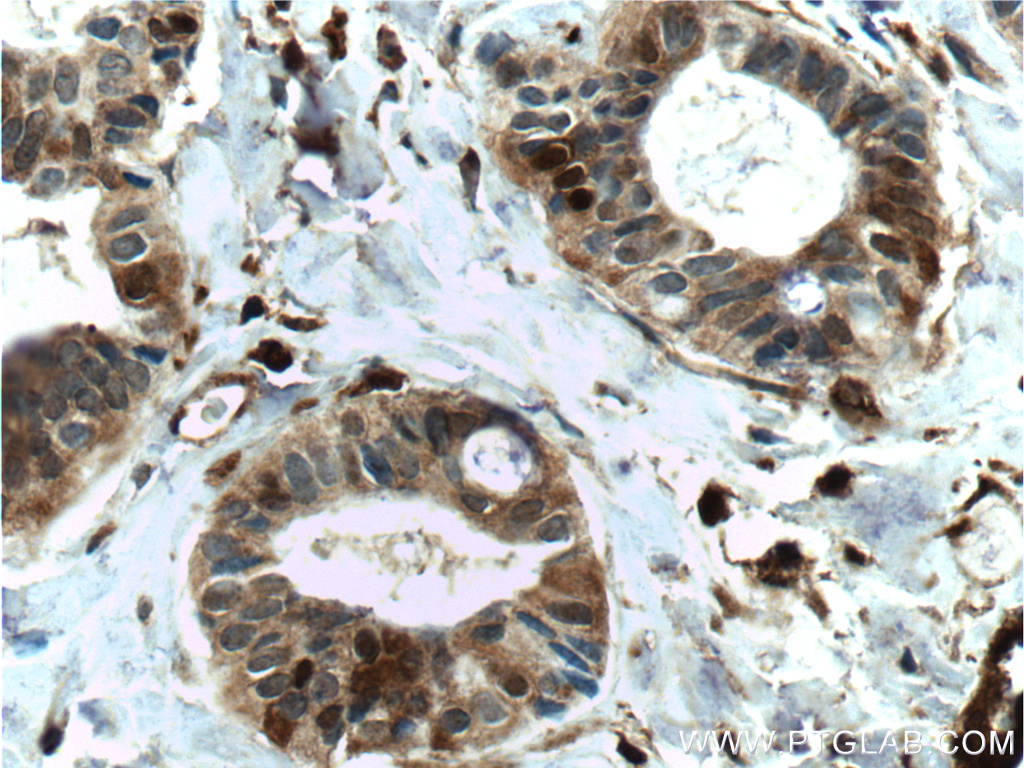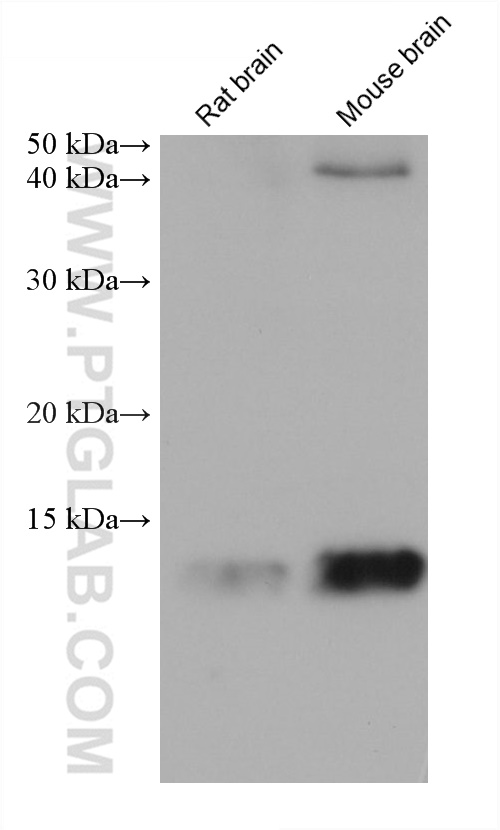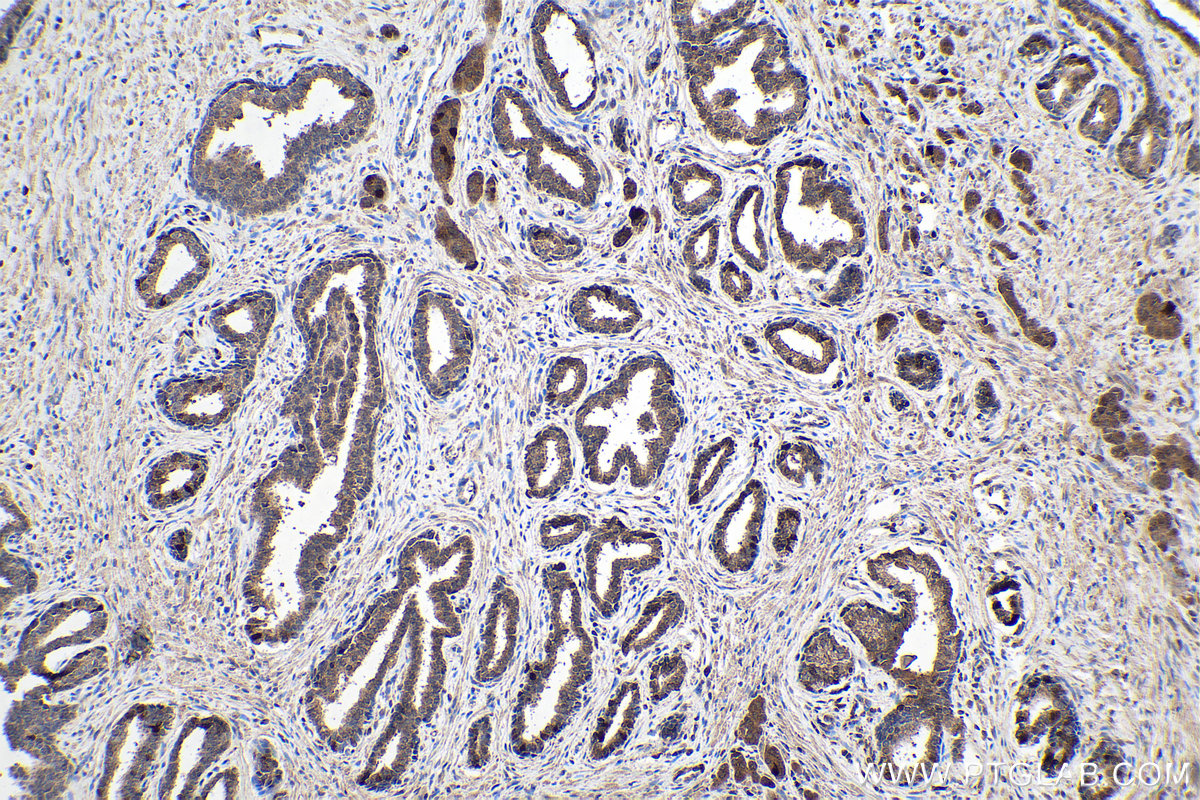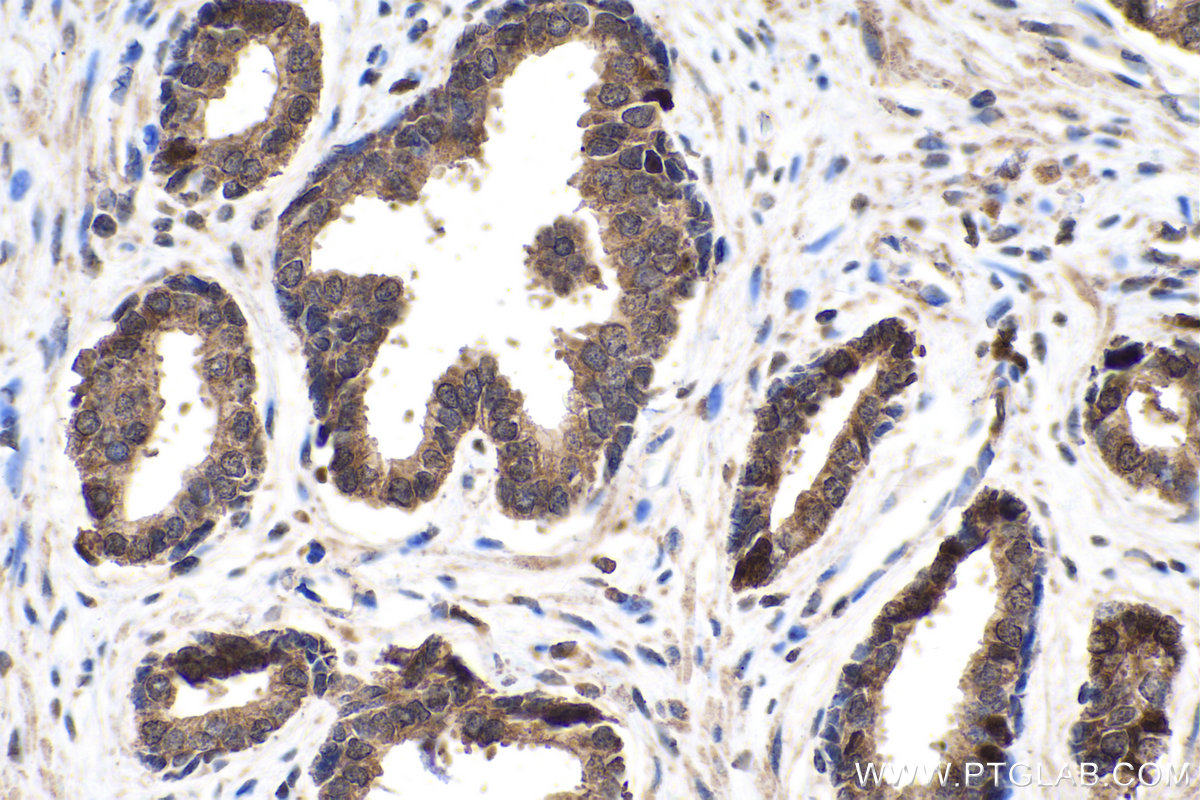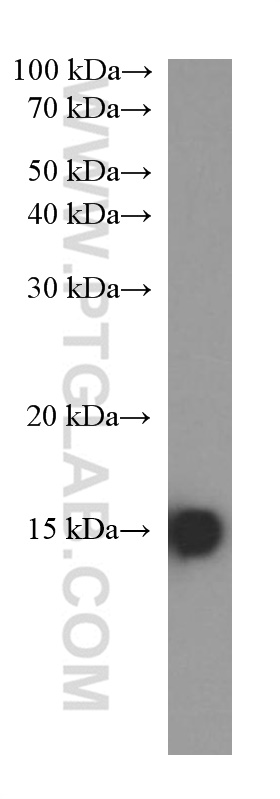- Featured Product
- KD/KO Validated
FABP5 Monoclonal antibody
FABP5 Monoclonal Antibody for WB, IHC, IF/ICC, ELISA
Host / Isotype
Mouse / IgG1
Reactivity
human, mouse, rat
Applications
WB, IHC, IF/ICC, ELISA and More (1)
Conjugate
Unconjugated
CloneNo.
1C6E12
验证数据展示
经过测试的应用
| Positive WB detected in | A375 cells, fetal human brain tissue, Hepa1-6 cells, rat brain tissue, U2OS cells, mouse brain tissue, A549 cells, HeLa cells, HEK-293 cells |
| Positive IHC detected in | human breast cancer tissue, human prostate cancer tissue, mouse brown adipose tissue Note: suggested antigen retrieval with TE buffer pH 9.0; (*) Alternatively, antigen retrieval may be performed with citrate buffer pH 6.0 |
| Positive IF/ICC detected in | HepG2 cells |
推荐稀释比
| Application | Dilution |
|---|---|
| Western Blot (WB) | WB : 1:2000-1:16000 |
| Immunohistochemistry (IHC) | IHC : 1:200-1:4000 |
| Immunofluorescence (IF)/ICC | IF/ICC : 1:200-1:800 |
| It is recommended that this reagent should be titrated in each testing system to obtain optimal results. | |
| Sample-dependent, Check data in validation data gallery. | |
产品信息
66299-1-Ig targets FABP5 in WB, IHC, IF/ICC, ELISA applications and shows reactivity with human, mouse, rat samples.
| Tested Applications | WB, IHC, IF/ICC, ELISA Application Description |
| Cited Applications | WB, IHC, IF |
| Tested Reactivity | human, mouse, rat |
| Cited Reactivity | human, mouse |
| Immunogen | FABP5 fusion protein Ag3005 种属同源性预测 |
| Host / Isotype | Mouse / IgG1 |
| Class | Monoclonal |
| Type | Antibody |
| Full Name | fatty acid binding protein 5 (psoriasis-associated) |
| Synonyms | Fatty acid-binding protein, epidermal, Fatty acid-binding protein 5, Fatty acid binding protein 5, Epidermal-type fatty acid-binding protein, EFABP |
| Calculated Molecular Weight | 135 aa, 15 kDa |
| Observed Molecular Weight | 15 kDa |
| GenBank Accession Number | BC019385 |
| Gene Symbol | FABP5 |
| Gene ID (NCBI) | 2171 |
| RRID | AB_2881682 |
| Conjugate | Unconjugated |
| Form | Liquid |
| Purification Method | Protein A purification |
| UNIPROT ID | Q01469 |
| Storage Buffer | PBS with 0.02% sodium azide and 50% glycerol pH 7.3. |
| Storage Conditions | Store at -20°C. Stable for one year after shipment. Aliquoting is unnecessary for -20oC storage. |
背景介绍
实验方案
| Product Specific Protocols | |
|---|---|
| WB protocol for FABP5 antibody 66299-1-Ig | Download protocol |
| IHC protocol for FABP5 antibody 66299-1-Ig | Download protocol |
| IF protocol for FABP5 antibody 66299-1-Ig | Download protocol |
| Standard Protocols | |
|---|---|
| Click here to view our Standard Protocols |
发表文章
| Species | Application | Title |
|---|---|---|
Carcinogenesis Serum fatty acid-binding protein 5 is a significant factor in hepatocellular carcinoma progression independent of tissue expression level.
| ||
Med Mol Morphol Expression of fatty-acid-binding protein 5 in intrahepatic and extrahepatic cholangiocarcinoma: the possibility of different energy metabolisms in anatomical location. | ||
J Allergy Clin Immunol Melatonin treatment increases skin microbiota-derived propionic acid to alleviate atopic dermatitis |
